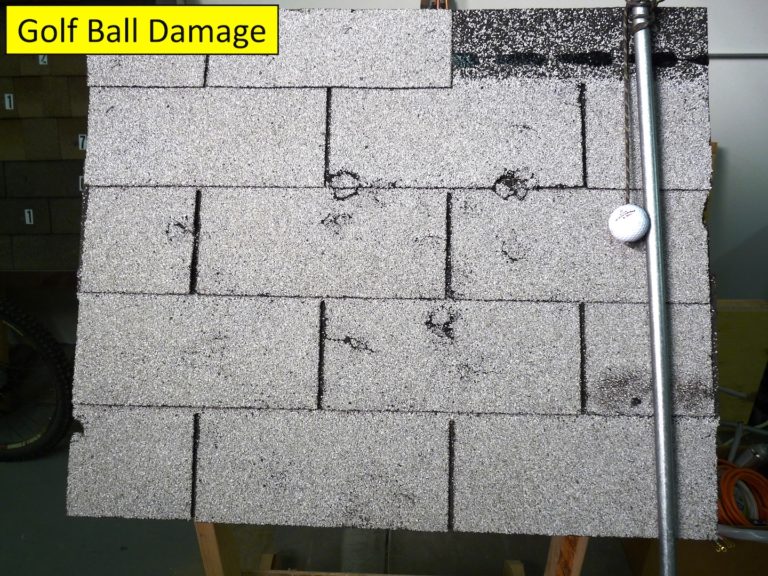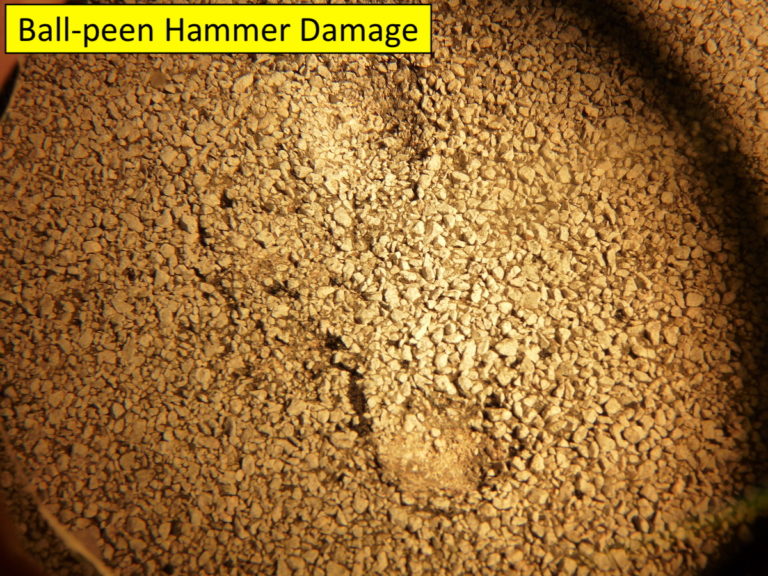STANDARDS OF PRACTICE
The International Standards of Practice for inspecting the roof system is located at www.nachi.org/sop.
MASTERING ROOF INSPECTIONS
To learn about inspecting roofs, please visit Mastering Roof Inspections.

Foot traffic (shingle butt) wear.
Look for butt wear this on natural paths of travel.
Observation

This is excessive wear and a manufacturing defect.
Observation

Foot damage caused by making sudden turns on a hot or new roof.
Missiles.
Caused by wind-blown items.
Tool damage.
Typically dropped tools.
Ladder damage.
Knife damage.
Observation

Caused by careless roofers during installation.
Faked hail damage.
Golf ball.
Observation

Ball peen hammer.
Observation

Note the crushed granules. Hail does not crush granules.
Framing hammer.
Observation


Creased shingle tabs.
Bent-back shingle tabs.
Shingle blow off.
Shingle pull-through.
Observation

Bonding of asphalt shingle fails first above the joints in underlying shingles.
Observation

Widespread wind damage above joints is an indicator of weak bonding across the roof.
Observation

Shingles that blow off in groups indicated that the roof was well-bonded.
Note that the shingles in the photo above were high-nailed.
Buckled Shingles
Observation

When dry roof sheathing is installed before it has had a chance to reach equilibrium moisture content (EMC) with the homesite environment, it will expand as it absorbs moisture from the air. If shingles have been installed before sheathing reaches EMC, shingles may buckle at panel edges.
